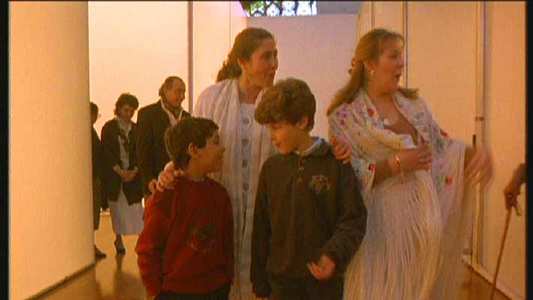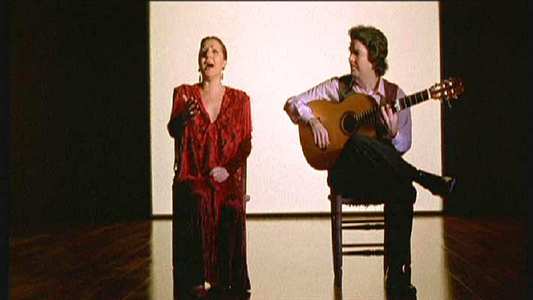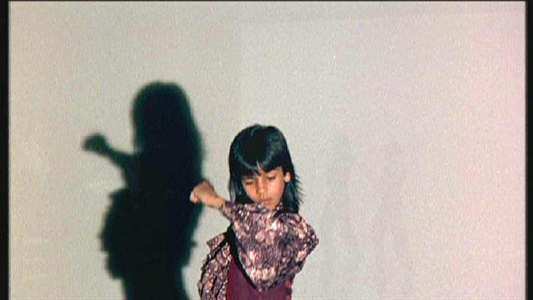Review of Carlos Saura: Box Set (Carmen / Flamenco / Tango)
Introduction
Carlos Saura is a respected director whose career has spanned nearly fifty years, his first film directed in 1956. He has won numerous international film awards over the years and here a boxset of three of his films is made available for your delectation. Gathered together under the theme of dance, these films span both flamenco and tango, two are films in the conventional sense whilst the third is really performance art captured on film.
Carmen: Producer Antonio (Antonio Gades) is putting together a modern flamenco interpretation of Bizet`s opera Carmen. Antonio is also the star dancer and is having trouble finding a co-star good enough to be Carmen herself. After much searching, he finds his Carmen, a girl from Seville called Carmen (Laura del Sol). Asking his best dancer Cristina (Cristina Hoyes) to work and train her, Carmen proves she is worthy of the part, although there is no love lost between the two female dancers. Antonio finds himself falling for Carmen and life begins to imitate art…
Flamenco: Flamenco, in its modern interpretation, emerged at the end of the 18th century, making it`s first public appearance on stage in the mid-19th century. Flamenco is rooted in a mixture of international musical cultures; Andalusian rhythms are fused with Gregorian chants, Persian melodies and Hindu & Greek psalms (amongst many others). This film brings together performers from the past with their modern contemporaries to recreate the magic of flamenco. Each chapter is a separate track that involves a combination of the three main aspects of the flamenco art: dancing, singing, guitar playing.
Tango: Mario Suarez (Miguel Ãngel Solá)is an Argentinian director in the process of putting together a dance film based on Argentina`s `Dirty War` against the backdrop of a broken relationship with the woman he still loves, Laura (Cecilia Narova). One of his investors, a Mafioso called Larroca (Juan Luis Galiardo), asks the director to give his young girlfriend Elena (Mía Maestro) an audition. Very quickly, Elena is not only taken on but also being groomed as one of the leads opposite Mario`s ex. Mario finds himself falling for Elena, but menace is in the air from the rejected Mafioso.

Video
Carmen: presented in a 1.66:1 aspect ratio, could find no real problems with this print, although to be fair I was so sucked into the film itself I probably wouldn`t have noticed anything anyway.
Flamenco: visible print damage with various artefacts appearing sporadically on the print. The lighting varies between fiery reds and yellows, harsh contrasting black and white and a cool blue. All accentuate the performances and add to the mood will good use of shadow.
Tango: again, some visible print damage especially over the opening credits. It`s a little ironic that the eldest print here has held up the best. Again filmed with fiery oranges and reds, giving the film a sensual glow.
It is worth noting that the cinematographer for the latter two films is Vittorio Storaro, who won Best Cinematography Oscars for Apocalypse Now, Reds and The Last Emperor.

Audio
Carmen: comes with a Dolby mono soundtrack, soundtrack includes a mix of the original Bizet score and a Spanish flamenco score by Paco de Luca, who also plays Paco in the film. Dialogue is in Spanish with seven sets of subtitles.
Flamenco: Dolby 2.0 Stereo soundtrack but echoes of the dancing reverberate around the room. Soundtrack is Spanish, but English subtitles are available.
Tango: has a Dolby 2.0 Stereo soundtrack and as with Flamenco the dancing echoes across the room. The soundtrack is wonderfully composed by Lalo Schifrin, composer of Rush Hour 2 and MI:2 (soon to be on Rush Hour 3 and MI:3 - both currently in pre-production)

Features
Carmen: theatrical trailer
Flamenco: filmographies for the director and cinematographer, plus detailed text factfiles on flamenco and each of the twenty tracks.
Tango: filmographies of main cast and crew

Conclusion
Carmen: This is quite an exhilarating film, although as it`s from 1983 you`ll have to suffer some dodgy haircuts and legwarmers aplenty. I`ve heard parts of the score but never seen an original production of Carmen, so I can`t compare the film to any stage production. What I can tell you is that this is an exhilarating ride from start to finish. The dancing, particularly by Gades, del Sol and Hoyes, is fantastic; full of passion and energy. I did get a little confused by the merger of the opera script with the story of the modern production, something I doubt opera fans would be bothered by. Still, it was an excellent production with a nice juxtaposition between the newer Spanish flamenco music and the original French soaring music.
Flamenco: The film kicks off with possibly the longest set of production credits I can remember seeing, it seems as if all of Spain was involved in this film. Not really experienced flamenco in this way before, so this was a real education for me. Although you can get a translation of the lyrics via the subtitles, I personally would recommend you don`t. The singing sounds really emotional as these artists give it their all, the translation of the lyrics into English just makes the whole thing seem a little ridiculous though, which spoils it a little. If you can cast your mind back a year to the O-Zone video for Dragostea Din Tei, and the lyrics translated in that, well that will give you an idea of how random some of these lyrics are. The solo performances are very good, but the group performances are stronger, adding more power and harmony. Again, plenty of passion and energy, and a good mix of young and elder performers.
Tango: Quite an ambitious film in that not only does it use the art of tango at it`s core but also covers echoed broken relationships and the political upheaval in Argentina. As with Saura`s Carmen, the plot jumps between reality and fantasy on a fairly regular basis. Initially it is used to show the director imagining shots for his film, but the edge is blurred the more the film progresses, leaving viewers to try to work out what is happening by themselves. The dancing is sensual and spectacular, justifiably winning the 1999 American Choreography Award.
On the minus side, it looks very much as if the regular DVD releases have just been gathered together with no additional work being done on them - not even any new artwork. On the plus side, you have three distinctive films that are thematically linked and full of strong powerful dance performances. I`ve not been exposed to dance in this way before and this is always a risk when reviewing something of this nature. I did find though that I enjoyed every minute of watching these films. It won`t be for everyone, so be careful before you pick this up. Those with a penchant for something different and a eye for dance, well you can`t go wrong. It just would have been nice to have a retrospective documentary on both the director and films; that would have made this set perfect.
Your Opinions and Comments
Be the first to post a comment!